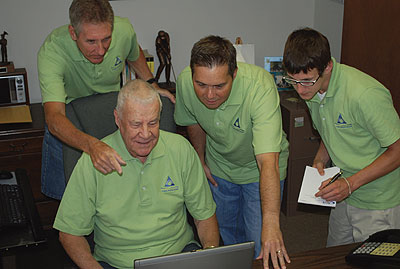By Kelly Cofrancisco
From the private sector, to non-profits and the government, every organization is looking to streamline its processes these days. Not only can cutting waste and reducing inefficiencies lower costs, but it also can help a company become environmentally friendly.
Government, health care, manufacturing and service industries are all seeing the benefits of streamlining processes, says Steve Quindlen, executive director of the Delaware Manufacturing Extension Partnership (DEMEP). Streamlining can also affect the bottom line by speeding up revenue income.
Face the Inefficiencies
Over the past year, most organizations have downsized; lean and other ways of streamlining processes are a way to help alleviate the extra workload taken on by employees, says Quindlen. “If someone is retiring, companies are not going to replace them for cost reasons,” he says. “So how do you close the gap and still satisfy the customer?” To discover inefficiencies and reduce waste, Quindlen advises taking a close look at all the processes by which your business is run to discover value-added and non-value added processes. “Most of the time the owner or manager knows they have inefficiencies and they know they need to address them,” he says.
Sharon Ruth, a manager at Willis of Delaware, an insurance broker, says streamlining has helped her increase workflow. What once took up to nine days now only takes four. “We cut out processes that bogged down the system and were not necessary,” Ruth says, noting the company worked with DEMEP.

From Left: Analtech’s Terry McVey, production manager; Matt Lampkin, founder and owner; Steven Miles, general manager; and Mickey Jones, human resources manager work together to streamline the manufacturer’s processes at its Newark facility. Photo provided by Analtech
Ken Grant of Analtech, a manufacturer in Newark, says that going green used to be viewed as a burden, but since adopting the mindset that there is always room for improvement, the company discovered its inefficiencies through the lean process.
Analtech was able to reduce the work that normally took four people to only two people and expanded their product line while doing so. Throughout the process, Analtech was able to retain the same number of employees. The company’s largest savings came in May when it switched to a four-day work week.
Grant says less run time of the building’s heating and cooling system, as well as less time commuting, are just a few of the energy and money-saving benefits of having a four day work week.
“I don’t think that this would have ever been brought up unless we had done our lean journey,” admits Grant. Analtech took a hard look at the numbers and debated on whether it would affect their customers. Since May, the company has only seen positive effects.
The Delaware Department of Natural Resources and Environmental Control recently streamlined its permitting process for air permits. The process used to take 200 days and is now at 85 days.
Streamline Increases Bottom Line
Quindlen recommends calculating the time it takes your company to get from the beginning of a process to the end result. Think about what you can eliminate, and then put a value on that time. For example, if an employee is making five dollars an hour, and it takes them 30 minutes for a task, and you cut out that task, you can save $2.50.
Ruth says streamlining her workflow has also freed up an extra 15 to 20 percent of the company’s staff time. They were able to cut half a staff person, saving $12,000 to $15,000.
Facing Opposition
But making changes to an office culture can sometimes ruffle feathers. Ruth says that the change was not easy for her staff, although it was an easy sell to management. She recommends keeping up the momentum to stick with the new changes. Quindlen recommends involving the “do-ers,” meaning bringing all people associated with a certain process into the discussion about changing it. He confirms the end result of streamlining is a quicker process, more engaged and involved employees, better return-on-investment (ROI), and satisfied customers.
Analtech’s challenge was convincing some employees that change could be beneficial. “You had a core group here who felt like ‘Hey, we’ve been doing [the process] like this for this long, why change anything?’” says Grant. “As we started to take a hard look at the details, there were things that we could do differently.” After a thorough review of Analtech’s processes, production is up. Employees are spending less time setting up and tearing down and more time getting jobs completed. Now that the company has gone lean, the adversity to change is gone. Everyone in the company is looking for ways that they can work a little more efficiently. “It will be a while before we can do an analysis of how much energy we have actually saved, but we haven’t seen the downside yet,” he says.
Employee morale has definitely improved at Analtech, where Grant observes, “People are more refreshed on Monday morning, and their productivity is up since they know they have those four days to get the job done.”

